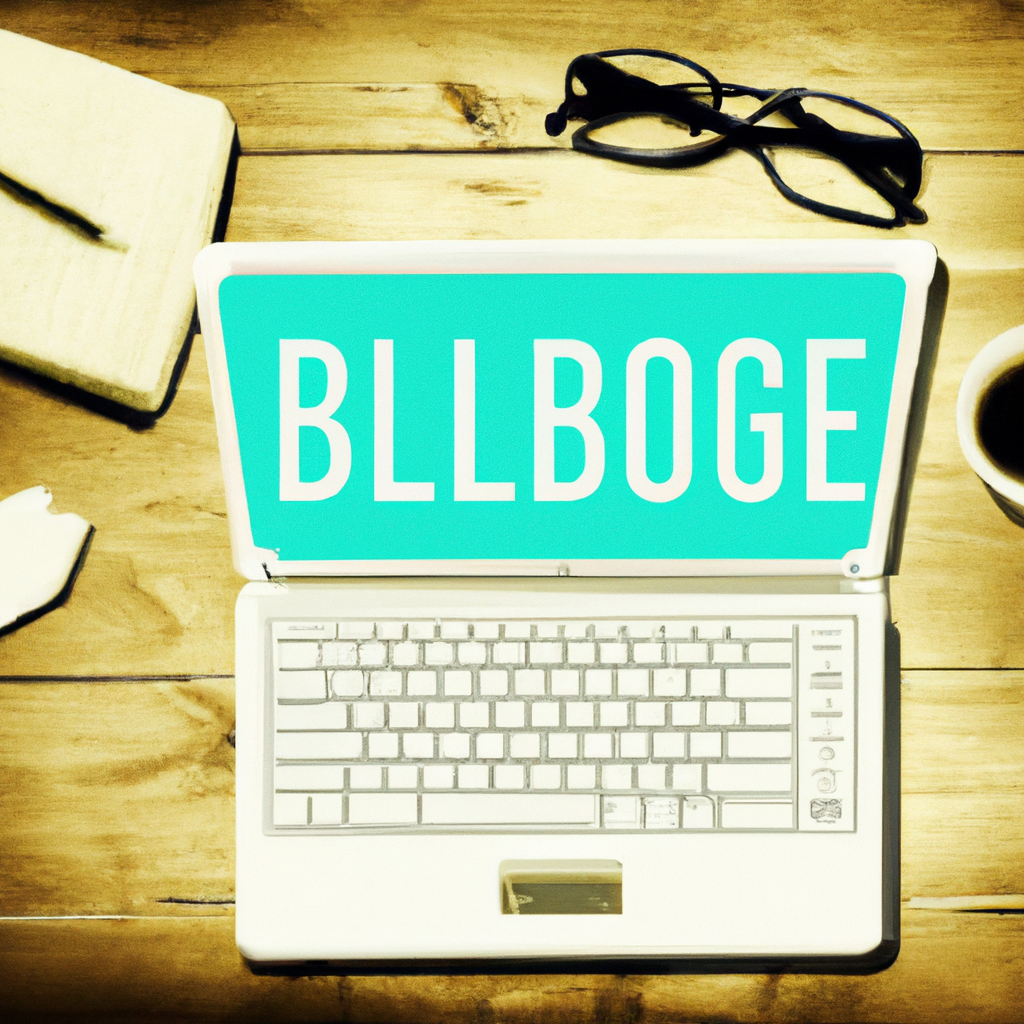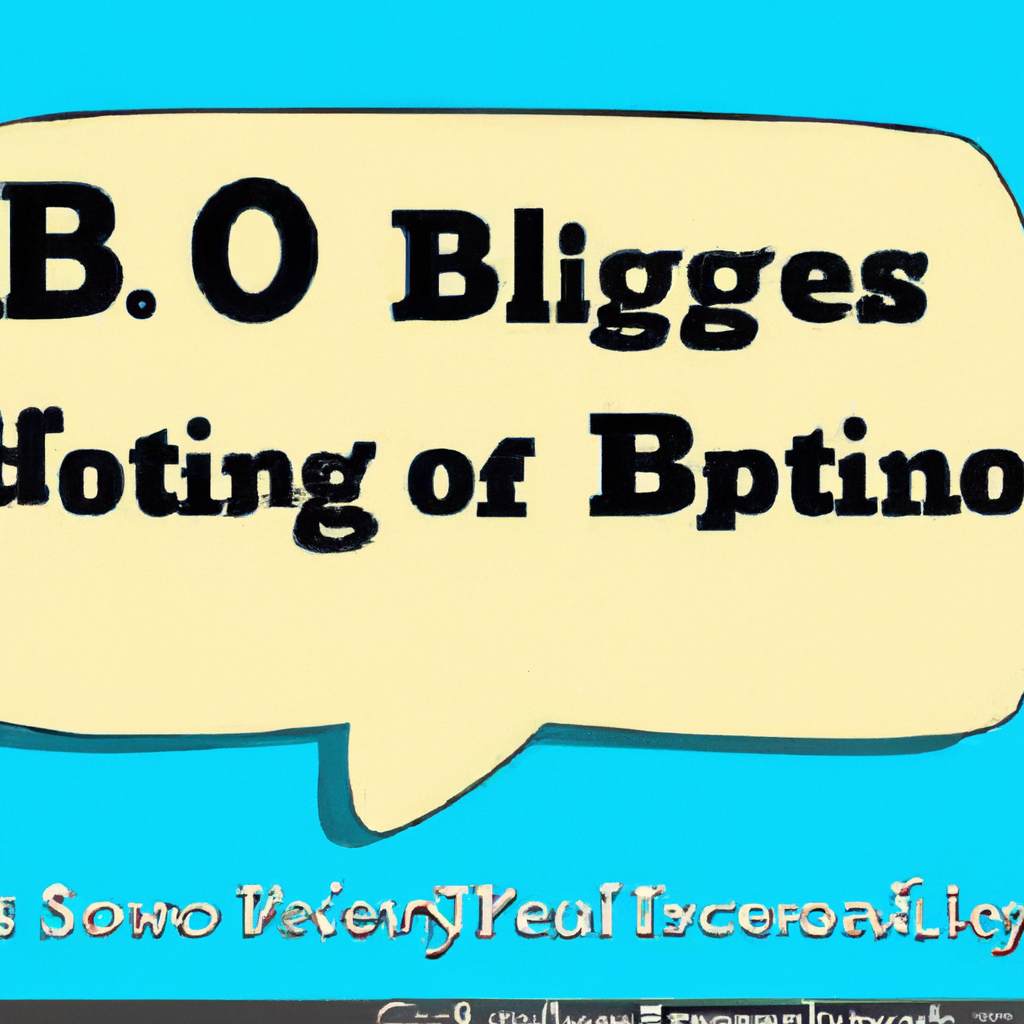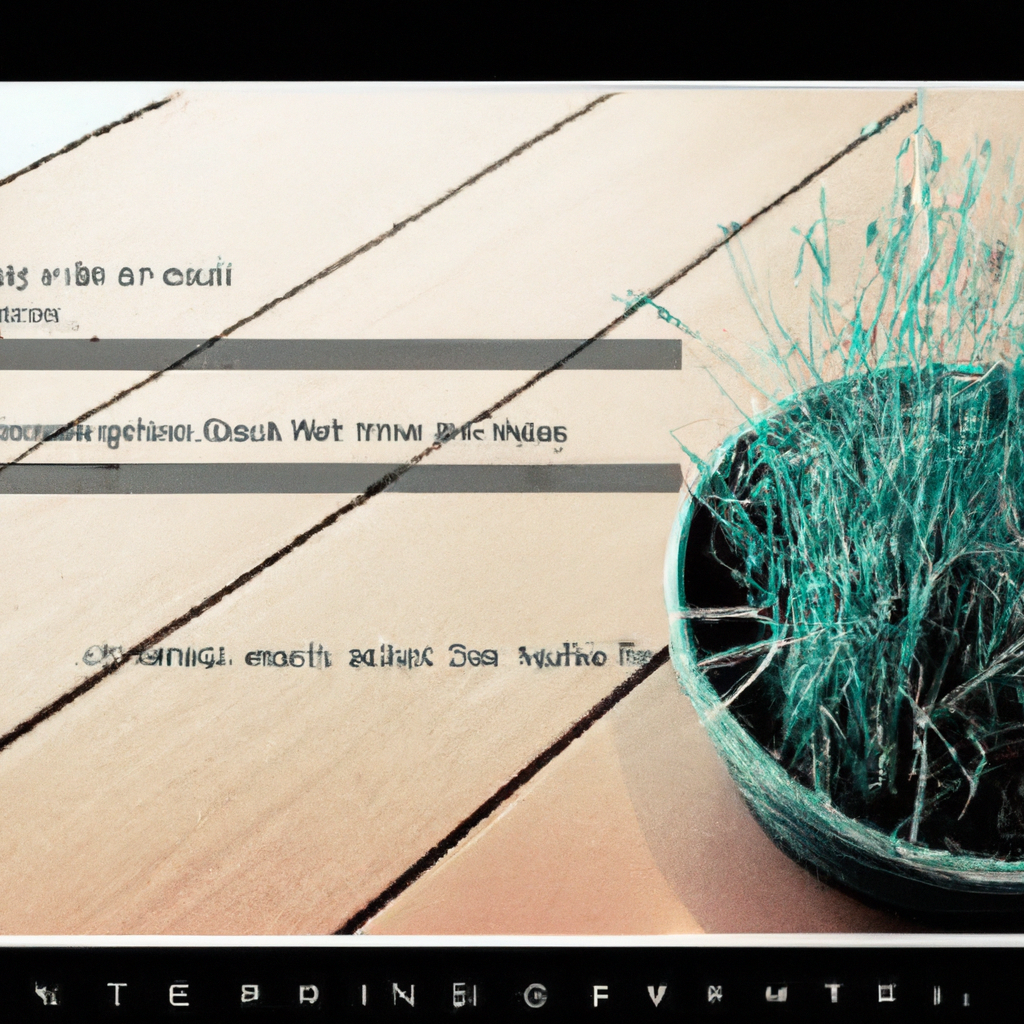So, you’re thinking about starting your own blog, huh? Well, you’ve come to the right place! In this article, we’ll guide you through the essential steps of creating and maintaining your very own blog. From selecting a topic to publishing your first post, we’ll cover everything you need to know to kickstart your blogging journey. Whether you’re a budding writer or just passionate about a particular subject, having a blog can be an exciting and rewarding experience. So, let’s get started on your path to becoming a successful blogger!

Decide on a Blogging Platform
Choose the Right Blogging Platform
When starting a blog, one of the first decisions you need to make is which blogging platform to use. There are numerous platforms available, each with its own unique features and benefits. Take your time to research and choose a platform that suits your needs and preferences. Consider factors such as ease of use, customization options, and the availability of plugins or themes.
Consider Your Blogging Goals
Before settling on a blogging platform, it’s important to consider your blogging goals. What do you hope to achieve with your blog? Are you looking to make money, establish yourself as an expert in a particular field, or simply share your thoughts and experiences? Understanding your goals will help you choose a platform that aligns with your objectives.
Explore Different Blogging Platforms
Take the time to explore different blogging platforms and familiarize yourself with their features. Some popular options include WordPress, Blogger, and Wix. Each platform has its own strengths and weaknesses, so it’s worth testing out a few to see which one feels most comfortable and suits your needs.
Evaluate the Pros and Cons
Once you have narrowed down your options, evaluate the pros and cons of each blogging platform. Consider factors such as ease of use, customization options, available support, and pricing. Additionally, read reviews and seek out opinions from experienced bloggers to get a better understanding of the platform’s strengths and weaknesses.
Define Your Blog’s Purpose
Identify Your Target Audience
Before you start writing for your blog, it’s essential to identify your target audience. Who are you writing for? What are their interests, demographics, and pain points? Understanding your audience will help you tailor your content to meet their needs and engage them effectively.
Determine the Main Focus of Your Blog
Decide on the main focus or theme of your blog. What topics or areas will you be primarily writing about? By having a clear focus, you can establish yourself as an authority in that niche and attract a loyal readership.
Select a Niche or Topic
To set your blog apart from others, consider selecting a specific niche or topic. Choosing a narrower focus allows you to target a specific audience, making your content more relevant and valuable. Whether it’s travel, food, fashion, or personal finance, selecting a niche helps you stand out in a crowded blogosphere.
Set Clear Blogging Goals
To stay motivated and focused, set clear blogging goals for yourself. Do you want to publish a certain number of blog posts per week or month? Are you aiming to reach a certain number of subscribers or page views? Setting goals will help you track your progress and stay on track as you work towards building a successful blog.
Choose a Memorable Domain Name
Brainstorm Domain Name Ideas
Choosing a memorable domain name is crucial for your blog’s success. Brainstorm ideas that reflect your blog’s purpose and resonate with your target audience. Consider using keywords related to your niche or topics to help with search engine optimization (SEO).
Check Domain Availability
Once you have a list of domain name ideas, check their availability using a domain registration service or a hosting provider. It’s important to choose a domain name that is unique and not already taken by another website.
Consider Relevant Keywords
Incorporating relevant keywords in your domain name can improve your blog’s visibility in search engine results. Consider using tools like Google’s Keyword Planner to research popular keywords related to your niche. However, ensure that the keywords flow naturally and do not make the domain name too long or confusing.
Make It Easy to Spell and Remember
Aim for a domain name that is easy to spell and remember. Avoid using numbers or hyphens and opt for a concise and catchy name that leaves a lasting impression on your readers. A memorable domain name can make it easier for your audience to find and revisit your blog.
Set Up Hosting and Install a Blogging Platform
Select a Reliable Web Hosting Provider
Choosing a reliable web hosting provider is crucial for the performance and security of your blog. Look for providers that offer excellent uptime, fast loading speed, reliable customer support, and affordable pricing. Read reviews and compare different hosting options before making a decision.
Register a Domain and Set Up Hosting
Once you have chosen a web hosting provider, register your chosen domain name and set up hosting. This involves purchasing your domain name and selecting a hosting plan that aligns with your blog’s needs. Some web hosting providers offer domain registration services as part of their hosting packages.
Choose the Right Blogging Software
After setting up hosting, choose the right blogging software for your blog. WordPress is one of the most popular options, known for its flexibility and user-friendly interface. Alternatively, you can explore other platforms like Blogger or Squarespace, depending on your preferences and technical expertise.
Install and Configure the Blogging Platform
Once you have selected your blogging software, follow the instructions provided by your hosting provider to install and configure the platform. This involves creating an administrator account, configuring basic settings, and selecting a theme or template for your blog’s appearance.

Customize Your Blog’s Appearance
Select a Suitable Theme
Choose a theme that aligns with your blog’s purpose and aesthetics. Themes determine your blog’s overall appearance, including layout, fonts, colors, and other visual elements. Look for themes that are responsive and customizable, allowing you to make changes to match your branding and content style.
Customize the Header, Colors, and Fonts
Personalize your blog’s appearance by customizing the header, colors, and fonts. Upload your own logo or branding elements to give your blog a unique identity. Experiment with different color schemes and fonts to create a visually appealing and cohesive design.
Add a Logo or Branding
Incorporate a professional-looking logo or branding elements to enhance your blog’s visual identity. A well-designed logo helps create a memorable impression and solidifies your blog as a recognizable brand. Consider hiring a designer or using online logo-making tools to create a logo that accurately represents your blog’s image.
Organize the Layout and Navigation
Ensure that your blog’s layout and navigation are intuitive and user-friendly. Organize your content into easily accessible categories and use clear menu structures to make it easy for readers to navigate through your blog. Consider including a search bar and relevant links in your sidebar or footer for added convenience.
Create Compelling Content
Plan a Content Strategy
Creating a successful blog requires strategic planning. Develop a content strategy to guide your writing and ensure consistency. Determine the frequency of your posts, the type of content you want to produce, and how you plan to engage your audience. A well-planned content strategy sets the foundation for building a loyal readership.
Write Engaging Blog Posts
Craft high-quality blog posts that captivate your readers. Use conversational language, tell personal stories, and provide valuable insights or information. Be sure to proofread your posts for spelling and grammatical errors and format them in a visually appealing way with headings, bullet points, and images.
Include Relevant Images and Multimedia
Enhance your blog posts with relevant images, videos, or infographics. Visual elements help break up the text and make your content more engaging. Utilize high-quality, copyright-free images or create your own graphics to add visual appeal and reinforce your message.
Optimize Your Content for SEO
Optimize your blog content for search engine optimization (SEO) to increase its visibility in search engine results. Conduct keyword research using tools like Google’s Keyword Planner to identify relevant keywords. Incorporate these keywords naturally throughout your blog posts, including in titles, headings, and meta descriptions.
Promote Your Blog
Share Your Posts on Social Media
Promoting your blog on social media is a powerful way to reach a wider audience. Create social media profiles for your blog on popular platforms such as Facebook, Twitter, and Instagram. Regularly share your blog posts, engage with your followers, and participate in relevant discussions and communities.
Engage with Other Bloggers and Readers
Building relationships with other bloggers and readers can help you expand your reach and gain valuable insights. Engage with other bloggers by leaving thoughtful comments on their posts and sharing their content. Respond to comments on your own blog and actively participate in discussions to foster a sense of community.
Utilize Email Marketing
Email marketing is an effective way to stay connected with your audience and promote your blog content. Offer a newsletter or mailing list subscription on your blog to collect email addresses. Send regular newsletters with exclusive content, updates, and links to your latest blog posts to keep your subscribers engaged.
Explore Guest Blogging Opportunities
Guest blogging is an excellent way to gain exposure and build backlinks to your blog. Look for reputable blogs in your niche and reach out to see if they accept guest posts. Write high-quality articles that provide value to their readers and include a link back to your own blog. This can drive new traffic and increase your blog’s visibility.
Build a Community and Interact with Readers
Respond to Comments and Messages
Interacting with your readers is vital for building a strong community. Take the time to respond to comments on your blog posts and engage in meaningful conversations. Additionally, make it easy for readers to contact you and respond promptly to messages or inquiries.
Encourage Discussions and Feedback
Encourage discussions among your readers by asking questions or soliciting their opinions in your blog posts. Create a friendly and inclusive environment where readers feel comfortable sharing their thoughts and experiences. Actively seek feedback from your audience to improve your content and better understand their needs.
Create a Newsletter or Mailing List
As mentioned earlier, creating a newsletter or mailing list is a great way to keep your readers engaged and informed. Offer exclusive content, updates, and even subscriber-only perks to incentivize readers to sign up. Send regular newsletters to your subscribers, providing valuable content and maintaining an ongoing relationship.
Organize Contests or Giveaways
Hosting contests or giveaways can be a fun way to engage your readers and attract new followers. Consider running competitions related to your blog’s niche or partnering with brands to offer exciting prizes. This not only encourages reader participation but also helps you gain exposure and expand your audience.
Monitor and Analyze Your Blog’s Performance
Set Up Website Analytics
Monitor your blog’s performance using website analytics tools like Google Analytics. These tools provide valuable insights into your blog’s traffic, user behavior, and engagement metrics. Set up analytics tracking on your blog to collect and analyze data that can guide your decision-making.
Monitor Traffic and User Behavior
Regularly monitor your blog’s traffic to identify trends and patterns. Understand where your traffic is coming from, which posts are performing well, and how users are interacting with your content. Tracking metrics like page views, bounce rate, and average time on page helps you understand the effectiveness of your blog’s content and design.
Track Key Performance Indicators (KPIs)
Establish key performance indicators (KPIs) to track the success of your blog. These may include metrics like monthly page views, subscriber growth rate, or social media engagement. Regularly review and compare these KPIs to set benchmarks and measure your blog’s progress over time.
Make Data-Driven Improvements
Use the data you collect from analytics tools to make data-driven improvements to your blog. Identify areas where you can optimize your content, design, or marketing efforts based on the insights you gain. Experiment with different strategies and continuously evaluate their impact on your blog’s performance.
Monetize Your Blog
Explore Different Monetization Methods
Once your blog has gained a solid readership, you may want to explore monetization methods. These can include various options like display advertising, affiliate marketing, sponsored content, or selling digital products. Research different monetization methods and choose those that align with your blog’s niche and audience.
Register for Advertising Networks
Advertising networks like Google AdSense or Media.net allow you to place ads on your blog and earn revenue based on impressions or clicks. Once your blog meets their eligibility requirements, register for these networks and strategically place ads on your blog to maximize your earning potential.
Create and Sell Digital Products
If you have specialized knowledge or expertise in your blog’s niche, consider creating and selling digital products. These can include e-books, online courses, or exclusive content subscriptions. Market your products to your audience and provide exceptional value to encourage sales and generate income.
Collaborate with Brands and Sponsored Posts
As your blog grows in popularity, you may attract interest from brands seeking to collaborate. Sponsored posts are a common way to partner with brands, where you write a post that features or promotes their products or services. Negotiate fair compensation for your work and select brands that align with your blog’s values and audience.
Having a blog is an exciting venture that allows you to share your thoughts, expertise, and experiences with the world. By following these comprehensive steps, from choosing the right blogging platform to monetization strategies, you can create a successful blog that resonates with your audience and achieves your blogging goals. Remember, consistency, engaging content, and a strong community are key to building a thriving blog. Happy blogging!


































